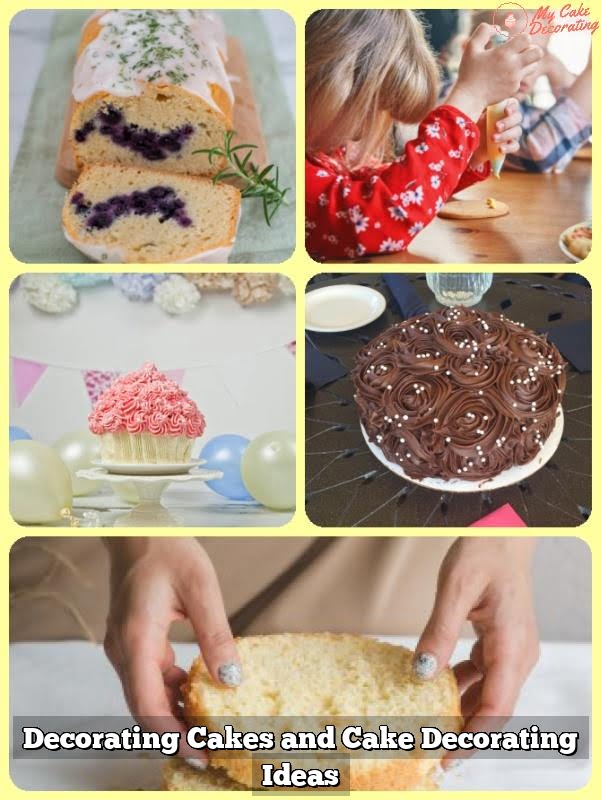Are you looking to add a creative touch to your baking skills? Cake decorating might just be the perfect hobby for you. Whether it’s for special occasions or just for fun, decorating cakes allows you to express your creativity and create delicious works of art. In this article, we will explore the essentials of cake decorating, from tools and techniques to tips for beginners.
Cake decorating is not only a fun and rewarding hobby but also an opportunity to unleash your artistic flair. With the right tools and techniques, you can turn a simple cake into a stunning masterpiece that will impress friends and family. From piping techniques to edible decorations, there are endless possibilities when it comes to decorating cakes.
In the following sections, we will delve into the essential tools for cake decorating, different types of frosting and icing, various decorating techniques, edible decorations, cake bases and shapes, advanced tools and equipment for professional cake decorating, as well as essential tips for beginners.
So whether you’re just starting out or looking to take your cake decorating skills to the next level, this article will provide you with all the information you need to get started on your cake decorating journey.
Essential Tools for Cake Decorating
When you are just starting out with cake decorating, it can be overwhelming to know where to begin. However, having the right tools is essential for success in this creative hobby. Here are some of the essential tools you will need for cake decorating:
- Spatulas: A good quality offset spatula is crucial for smoothing frosting and applying it evenly on the cake.
- Pastry bags: These disposable or reusable bags are used for piping frosting onto cakes and cupcakes.
- Piping tips: There are various types of piping tips available, each creating different designs when used with pastry bags.
- Turntable: A must-have tool for easily rotating your cake as you decorate, ensuring an even application of frosting and decorations.
- Bench scraper: This tool is useful for achieving smooth sides and sharp edges on your frosted cake.
- Cake leveler: To ensure even layers when stacking a cake, a cake leveler is essential for cutting through the middle of baked cakes.
These tools provide the foundation for successful cake decorating and will help you achieve professional-looking results.
In addition to these basic tools, there are also specialized items that can take your cake decorating to the next level. Advanced equipment such as an airbrush machine can be used to add intricate designs and patterns to cakes. While not necessarily essential for beginners, these tools open up a world of possibilities for more experienced decorators. Regardless of skill level, having the right tools at your disposal will make your cake decorating endeavors much easier and more enjoyable.
Types of Frosting and Icing
When it comes to cake decorating, choosing the right frosting or icing can make all the difference in the final look and taste of your creation. There are several popular types of frosting and icing that are commonly used in cake decorating, each with its own unique properties and uses. Understanding the differences between buttercream, fondant, and royal icing can help you achieve the perfect finish for your cakes.
Buttercream
Buttercream is one of the most versatile and widely used frostings in cake decorating. Made from butter, powdered sugar, and flavorings, buttercream can be easily colored and flavored to suit any design or theme. Its creamy texture makes it perfect for spreading and piping, making it ideal for creating smooth finishes or intricate designs.
Fondant
Fondant is a pliable sugar dough that is rolled out and used to cover cakes for a sleek, polished look. It can also be sculpted into decorative shapes and figures to adorn cakes. Fondant has a smooth, matte finish that provides a clean canvas for intricate designs. While not as rich in flavor as buttercream, fondant offers a professional appearance that is especially popular for special occasion cakes like wedding and birthday cakes.
Royal Icing
Royal icing is a hard-drying icing made from egg whites or meringue powder mixed with powdered sugar. It can be piped into delicate lace-like designs or used for intricate details on cookies and gingerbread houses as well as attaching edible decorations to cakes. Because it dries hard, royal icing is often used for structural elements in cake decorating such as creating 3D decorations that need to hold their shape.
Understanding the different properties of these types of frostings and icings will enable you to choose the best one for your specific cake decorating needs. Each type has its own unique applications and mastering them will enhance your creativity and skills in cake decorating.
Decorating Techniques
When it comes to cake decorating, there are a variety of techniques that can take your creations to the next level. Whether you’re a beginner or an experienced baker, mastering different decorating techniques can make your cakes truly stand out. Here are some essential techniques and tools for cake decorating:
- Piping: Piping is the art of using a pastry bag and piping tips to create intricate designs on cakes. With different tips, you can create beautiful borders, lettering, and intricate patterns.
- Frosting Flowers: Creating delicate and realistic flowers out of frosting is another popular technique in cake decorating. With the right tools and practice, you can make stunning floral arrangements on your cakes.
- Fondant Sculpting: Fondant is a versatile sugar paste that can be shaped and sculpted into various designs. From sculpting figures to covering cakes with smooth fondant layers, this technique adds a professional touch to your creations.
These are just a few examples of the many decorating techniques that you can utilize to elevate your cake decorating game. While these techniques may take time and practice to master, they will undoubtedly enhance the beauty and creativity of your baked goods.
In addition to these techniques, there are also various other methods such as stenciling, airbrushing, and marbling that can add unique elements to your cake designs. By experimenting with different techniques, you can find what works best for you and create stunning edible works of art.
Remember that patience and persistence are key when learning new cake decorating techniques. Don’t be afraid to try new things and push yourself creatively – the results will be well worth it.
Edible Decorations
When it comes to cake decorating, edible decorations play a crucial role in adding color, texture, and flavor to your creations. From simple sprinkles to intricate chocolate shavings, these edible elements can take your cake designs to the next level. Let’s explore some of the most popular and versatile edible decorations for cake decorating.
Sprinkles and Nonpareils
Sprinkles come in a variety of shapes, sizes, and colors, making them a versatile choice for adding a pop of color and texture to your cakes. Nonpareils are tiny round sprinkles that add a delicate touch to desserts. Whether you’re creating a whimsical birthday cake or elegant wedding cupcakes, sprinkles and nonpareils can be used to enhance the visual appeal of your baked goods.
Edible Glitter and Pearls
For those looking to add a touch of glamour to their cakes, edible glitter and pearls are the perfect choice. Available in a range of colors and sizes, edible glitter and pearls can be used to create eye-catching designs on fondant-covered cakes or as accents on buttercream frosting. These decorations are a great way to add shimmer and sparkle to any celebration cake.
Chocolate Shavings and Curls
Chocolate shavings and curls are a decadent addition to any cake design. Whether you’re creating a classic chocolate ganache cake or experimenting with different flavors, chocolate shavings and curls can be used to add elegance and richness to your creations. From dark chocolate curls for an intense cocoa flavor to white chocolate shavings for a subtle sweetness, these edible decorations offer endless possibilities for cake decorating enthusiasts.
From creating colorful designs with sprinkles and nonpareils to adding elegance with edible glitter and pearls, there is no shortage of options when it comes to edible decorations for cake decorating. Experiment with different textures, flavors, and techniques to bring your unique vision to life. After all, edible decorations are not just toppings but also tools for expressing creativity through baking.
Cake Bases and Shapes
Cake decorating is not only a fun and creative hobby, but it also allows you to create beautiful and delicious edible works of art. When it comes to cake decorating, choosing the right type of cake as a base is crucial to the success of your design. Different types of cakes have varying textures, flavors, and structural integrity, which can affect how they are decorated.
One popular choice for cake decorating is the classic sponge cake. Its light and airy texture makes it easy to work with when layering with frosting or fondant. Pound cakes are another great option for decorating as their denser and sturdier crumb can support heavier decorations such as sculpted fondant figures. In contrast, chiffon cakes are known for their delicate and fluffy texture that may not be suitable for elaborate decorations but are perfect for lighter frostings and simple designs.
For those looking to get creative with shapes, there are specialty cake pans available in various forms such as hearts, stars, or even intricate castle designs. These pans can help you achieve unique shapes without the need for advanced cake sculpting skills. Additionally, some decorators use basic round or rectangular pans to create tiered cakes by stacking them on top of each other.
Understanding the different types of cakes and their suitability for decorating is essential when embarking on your cake decorating journey. Whether you’re a beginner or a seasoned decorator, knowing which cake bases work best with your design vision will help ensure that your creations not only look stunning but taste delicious too.
| Type of Cake | Suitability for Decorating |
|---|---|
| Sponge Cake | Great for layering with frosting or fondant |
| Pound Cake | Denser crumb supports heavier decorations |
| Chiffon Cake | Delicate texture suitable for lighter frostings and simple designs |
Advanced Tools and Equipment
If you are serious about taking your cake decorating to the next level, investing in advanced tools and equipment can help you achieve professional-looking results. One essential item for professional cake decorating is an airbrush machine. This tool allows you to seamlessly apply color and create intricate designs on your cakes with precision. Airbrushing provides a smooth and flawless finish to your creations, giving them a professional touch that is hard to achieve with traditional methods.
Another must-have for professional cake decorators is a cake leveler. This tool ensures that your cakes are perfectly leveled, making it easier to stack multiple layers and creating a smooth canvas for your decorations. A cake leveler is especially useful when working with tiered cakes, where precision is key to achieving a polished final result.
In addition to these advanced tools, there are other specialized items that can elevate your cake decorating game. These include sculpting tools for working with fondant or gum paste, specialty piping tips for intricate designs, and stencils for creating detailed patterns on frosting or fondant.
While these items may not be essential for beginners, they are invaluable for those looking to expand their skills and create show-stopping cakes. So if you’re wondering what you need for cake decorating at a professional level, having access to these advanced tools and equipment can make all the difference in your creations.
Essential Tips for Beginners
In conclusion, cake decorating is a rewarding and enjoyable hobby that allows for creativity and personal expression. Whether you’re a beginner or an experienced baker, having the right tools for cake decorating is essential. From spatulas and pastry bags to piping tips and more, these items are necessary for creating beautiful and intricate designs on your cakes.
When it comes to frosting and icing, knowing the different types and their uses in cake decorating can make a big difference in the final result. Buttercream, fondant, and royal icing each have their own unique qualities and applications, so it’s important to understand how to use them effectively.
For beginners, starting your cake decorating journey can be both exciting and daunting. It’s important to learn from mistakes and seek out resources for learning and inspiration. With the right guidance and practice, you can develop your skills and create stunning cakes that will impress friends and family alike. No matter where you are in your cake decorating journey, having the knowledge of what you need for cake decorating is crucial for success.
Frequently Asked Questions
What Supplies Do I Need to Decorate a Cake?
Decorating a cake requires a few essential supplies like frosting, piping bags, tips for creating different designs, spatula for spreading frosting, offset spatula for smoothing the icing, and a turntable to easily frost and decorate the cake.
What Do Cake Decorators Need?
Cake decorators need a variety of tools such as cake leveler for even layers, fondant smoother for smooth fondant finish, different shapes and sizes of cutters for fondant decorations, food coloring for vibrant designs, and edible embellishments like sprinkles or edible pearls.
What Does a Beginner Need for Cake Decorating?
Beginners in cake decorating should start with basic supplies including a set of piping tips, gel food coloring for custom colors, an angled spatula for smooth finishes, parchment paper for practicing piping techniques, and a simple icing smoother to create clean lines and edges on the cake.

Welcome to my blog about home and family. This blog is a place where I will share my thoughts, ideas, and experiences related to these important topics. I am a stay-at-home mom with two young children. I hope you enjoy reading it! and may find some helpful tips and ideas that will make your home and family life even better!





